For Philips Hue alternatives that won’t break the bank, consider Gledopto controllers for custom LED strips, Linkind smart bulbs with Zigbee compatibility, or affordable WiFi options from Feit and Sylvania. You can integrate these with budget-friendly hubs like Amazon Echo devices with Zigbee or Samsung SmartThings. For the ultimate DIY approach, build your own system using Arduino or ESP microcontrollers with RGB LED strips. The complete guide below will illuminate all your smart lighting possibilities.
Gledopto Controllers: Create Custom LED Strip Lighting Systems
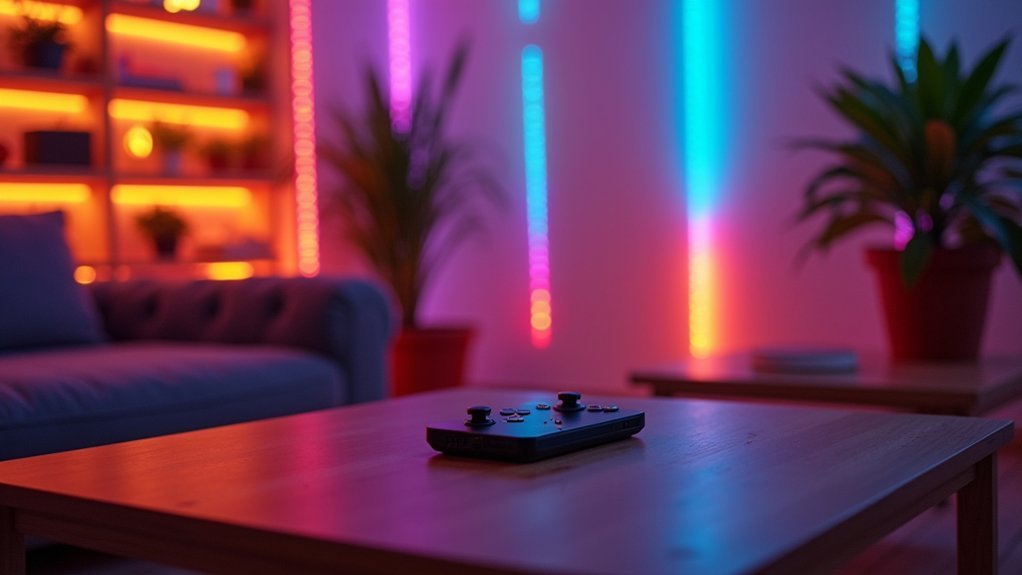
When designing a budget-friendly home lighting system, Gledopto controllers offer an impressive array of features for DIY enthusiasts. They support multiple controller types including RGBCCT, RGBW, and Dimmer options, while handling voltage ranges from DC12V up to 54V for various LED strips.
You’ll appreciate the technical capabilities, with output currents up to 15A total and 6A per channel on RGB CCT controllers. They’re compatible with popular LED strips like WS2812B and SK6812, giving you access to 16 million colors and separate white light control.
For smart home integration, you can connect through ZigBee gateways or use the 2.4G RF remote without a gateway. These controllers utilize the Standard ZigBee 3.0 protocol for maximum compatibility with various ecosystems. Customize your lighting with adjustable color temperature, brightness levels, and dynamic modes—all protected by typical 2-year warranty coverage.
Linkind Smart Bulbs: Affordable Zigbee Lighting Solutions
Linkind Smart Bulbs offer another powerful yet budget-friendly option for your DIY lighting projects. Available in multiple shapes and sizes with an E26 base, these bulbs work with most standard fixtures while providing impressive versatility with up to 16 million colors and tunable white settings (1800K-6500K).
Affordable smart illumination that transforms ordinary spaces with millions of colors and tunable whites for any mood or project.
You’ll appreciate the dual connectivity via Wi-Fi and Bluetooth, eliminating the need for additional hubs. Control your lighting through the AiDot App, which enables scene creation, grouping, scheduling, and even music synchronization. The app allows users to create preset scenes for various occasions, enhancing home decoration for festivals and events.
Voice commands work seamlessly with Alexa and Google Home, while Matter versions support Apple HomeKit.
With energy-efficient operation (8.5-14W), 25,000-hour lifespan, and prices remarkably lower than Philips Hue, Linkind delivers premium smart lighting features without the premium price tag.
DIY Smart Lighting Using Feit and Sylvania Alternatives
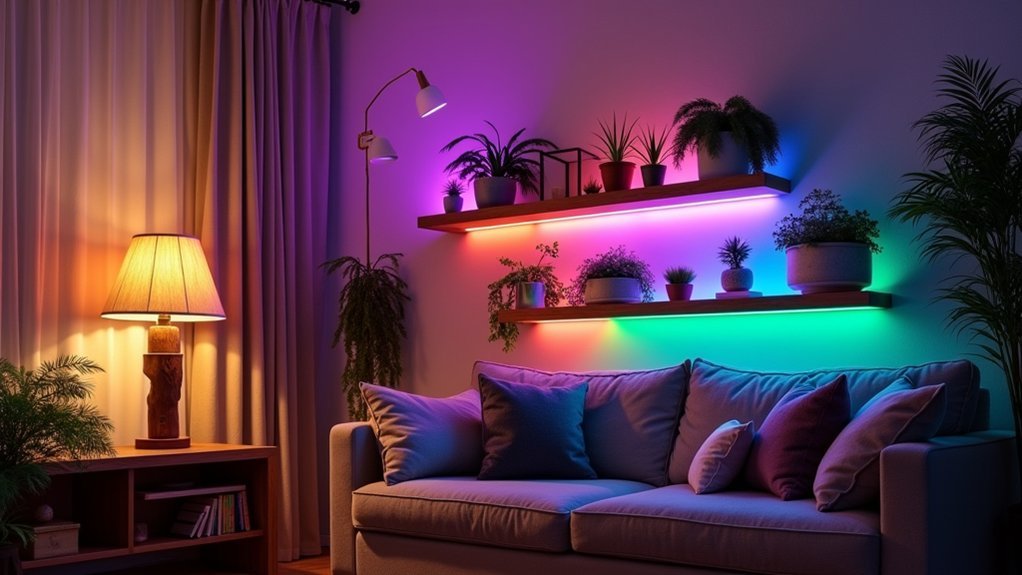
If you’re seeking even more affordable smart lighting options than Linkind, Feit and Sylvania offer compelling alternatives that won’t break the bank.
Feit’s WiFi-connected bulbs eliminate the need for a hub, with color-changing options available in budget-friendly packs around $25.
Sylvania provides both Zigbee and WiFi options, giving you flexibility in how you build your smart home.
While both brands typically offer less brightness than Philips Hue, they deliver sufficient illumination for standard lighting needs with similar color capabilities at a fraction of the cost.
Both systems integrate well with popular smart home platforms and smart speakers for voice control.
You’ll enjoy the convenience of app-based control for adjusting brightness, colors, and scheduling—all while saving considerably compared to premium brands.
The Feit Electric app allows users to easily adjust tunable white settings from warm 2700K to cool 6500K for different lighting moods.
Budget-Friendly Smart Hub Integration Options
While exploring budget-friendly smart lighting, you’ll need to contemplate how these devices integrate with smart hubs—the brain of your connected home system.
Fortunately, several affordable options exist. Amazon Echo devices with Zigbee support offer the simplest entry point, directly connecting to compatible bulbs like Ikea and Linkind without additional hardware.
Smart homes needn’t break the bank—Zigbee-enabled Echo devices connect directly to budget-friendly bulbs, eliminating costly hub requirements.
For broader compatibility, the Samsung SmartThings hub supports multiple protocols (Zigbee, Z-Wave, Wi-Fi, and Matter) at a reasonable price. Google TV Streamer doubles as a Matter-compatible hub with Thread support for under $100, even providing on-screen light controls.
Ikea’s ecosystem works with existing hubs to avoid extra costs, while Linkind offers its proprietary hub as a budget-friendly alternative. The Ikea Dirigera hub enables local control functionality even when internet connection is unavailable, making it reliable for everyday use.
Choose based on your preferred voice assistant and the protocols your lighting devices support.
Step-by-Step Guide to Building Your Own Smart Lighting Network

Building your own smart lighting network offers a rewarding alternative to purchasing pre-made systems, especially when you’re working with limited funds. Start by selecting an Arduino or ESP8266/ESP32 microcontroller and compatible RGB LED strips with matching power supplies.
First, define your lighting goals and sketch a physical layout. Cut LED strips to size and secure them using adhesive or clips. Connect the strips to your microcontroller, along with any sensors you’ve chosen for motion or sound detection. Remember to establish a common ground connection between your power supply and Arduino to ensure proper operation of the circuit.
Next, program your controller using Arduino IDE with the appropriate libraries. Flash the firmware and test basic functions.
Finally, set up network connectivity and pair with a mobile app or open-source solution like diyHue for remote control and voice assistant integration.
Frequently Asked Questions
Can These Alternative Bulbs Work With Existing Philips Hue Motion Sensors?
Yes, alternative bulbs can work with Philips Hue motion sensors if they’re Zigbee-compatible and connected through the Hue Bridge. IKEA Tradfri bulbs work particularly well, while Wi-Fi bulbs like LIFX require smart home platform integration.
How Does Color Accuracy Compare Between DIY Setups and Authentic Hue Products?
You’ll notice authentic Hue products deliver better color accuracy than DIY setups due to calibrated LEDs, higher CRI values, and specialized hardware. DIY alternatives typically produce less precise colors with oversaturated or muted tones.
Will Power Outages Affect Smart Bulb Memory Settings or Configurations?
Yes, power outages may affect your smart bulbs. Most will retain settings in flash memory, but they’ll often turn on at full brightness when power returns unless they have specific power outage detection features.
Can DIY LED Strips Be Safely Installed in Bathrooms or Outdoors?
Yes, you can safely install DIY LED strips in bathrooms and outdoors if you use waterproof, moisture-resistant options. Guarantee proper sealing, follow mounting guidelines, and use outdoor-rated power supplies for exterior installations.
How Difficult Is Troubleshooting When Budget Alternatives Disconnect From Networks?
You’ll face considerable troubleshooting challenges when budget alternatives disconnect. Without official apps or bridges, you’re left with manual resets, power cycling, and complex re-pairing processes that require technical knowledge most users don’t have.
In Summary
You don’t need to break the bank for smart lighting. With these five alternatives, you’ll save money while still enjoying customizable, connected illumination throughout your home. Whether you’re building LED strips with Gledopto, using affordable Linkind bulbs, or exploring Feit and Sylvania options, you’ve got choices. Start small, expand gradually, and you’ll create a sophisticated smart lighting system that rivals Philips Hue—without the premium price tag.


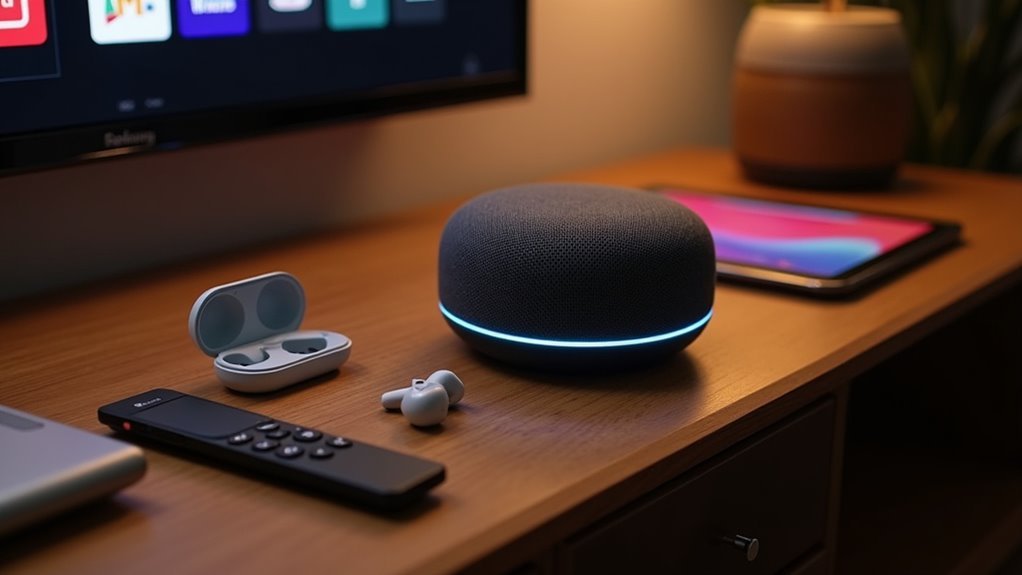
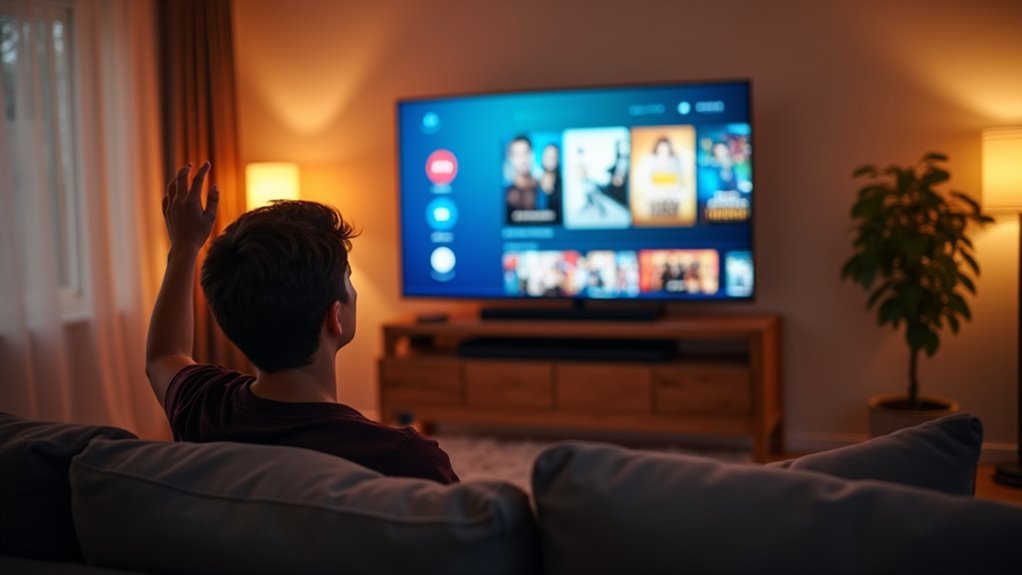
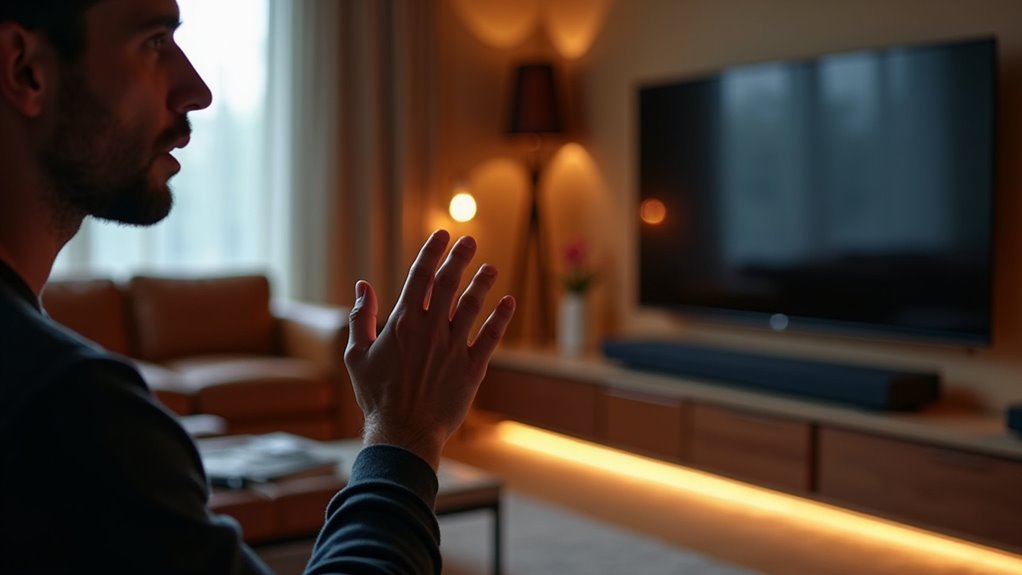
Leave a Reply